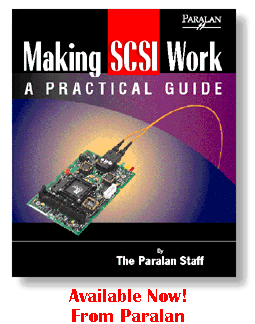LVD/SE
LVD Configuration
LVD Termination
For more information on this book please see: Making SCSI Work, A Practical Guide written by Paralan Staff. For information on problem solving with our LVD products, see:
| |||||||||||||||||||||||||||||||||
|
Paralan Corporation 4655 Ruffner Street, San Diego, CA 92111 Sales: (800) 479-7719 | Tel.: (858) 560-7266 | Fax: (858) 560-8929 | E-mail: info@paralan.com |
|||||||||||||||||||||||||||||||||

Custom Search
|




